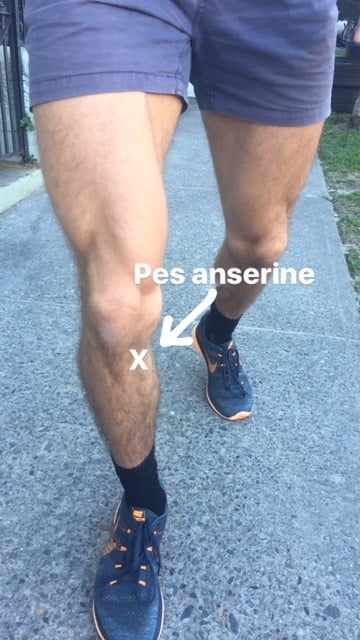
Please call .uk on 03 to arrange an appointment or book online today. Physiotherapy treatment will also include advice to help prevent any future re-occurrence. If it is properly diagnosed and treated, pes anserinus bursitis generally does not produce any long-term effects. Education for future activity and exerciseĬould there be any long-term effects from pes anserinus bursitis?.Biomechanical treatment such as gait (walking) re-education or orthotics such as insoles.Physiotherapy can treat pes anserinus bursitis and help to prevent it occurring in the future. Physiotherapy treatment for pes anserinus bursitis. A common sign of pes anserine bursitis will be anterior knee pain and may be caused by overuse, an impact injury or tight hamstrings. These are likely to be sporting activities and it is best to stop them to give the bursa a chance to settle down so that it can heal and treatment can be provided. Pes anserine bursitis is one of the common forms of bursitis located around the knee and involves the inflammation and swelling of the pes anserine bursa located along the proximomedial aspect of the tibia. If you have or suspect you have pes anserinus bursitis, you should stop the activities that cause you pain. We can locate this at the proximal medial aspect of the Knee, two inches below the medial knee joint line between the pes anserinus tendons 2 3 4. What shouldn’t I do if I have pes anserinus bursitis? Pes Anserine bursitis, also known as intertendinous bursa, is an inflammatory condition of bursa of the conjoined insertion of the sartorius, gracilis and semitendinosus. In the meantime you can apply ice to the affected area using a bag of frozen peas or crushed ice wrapped in a damp cloth for 15–20 minutes over the affected area every 1–2 hours.Ībove: Therapist performing knee assessment If you have or suspect you have pes anserinus bursitis, a physiotherapist will be able to relive pain and prevent the problem occurring in the future. What should I do if I have pes anserinus bursitis? Here are 7 of the most common knee bursitis types, their, symptoms, treatment, and more. The inside of the knee and/or upper inside of the shin bone (tibia) is tender to touch Knee bursitis comes in many forms, depending on its cause and location.Swelling on the inside of the knee and/or upper inside of the shin bone (tibia).Pain on the inside of the knee and/or upper inside of the shin bone (tibia).Symptoms of pes anserinus bursitis will build up gradually over time as there is no sudden onset. What are the symptoms of pes anserinus bursitis? Flat feet causing biomechanical problems.Injury to the ligament on the inside of the knee (medial collateral ligament).

There are some factors that can increase the chances of pes anserine bursitis occurring.

If this happens frequently then the bursa can become inflamed and cause pain. These can occur during sporting activities such as running, golf or basketball. Repeated movements that use the three tendons (gracilis, sartorius and semi tendinosis) can put pressure on the pes anserine bursa. Above: Therapist performing soft tissue massage on the tissues aound the knee


 0 kommentar(er)
0 kommentar(er)
